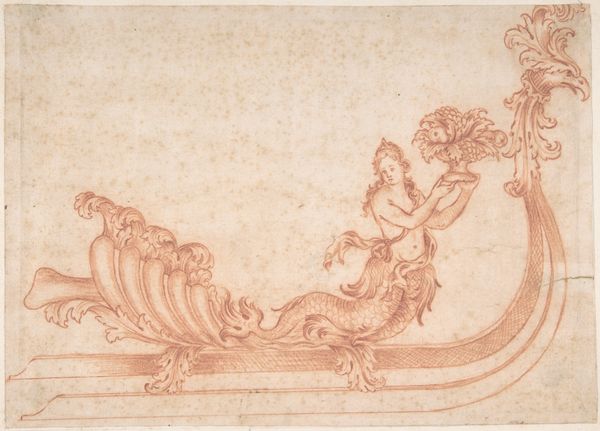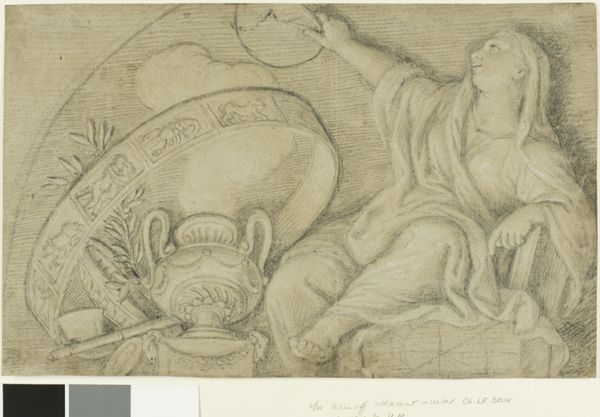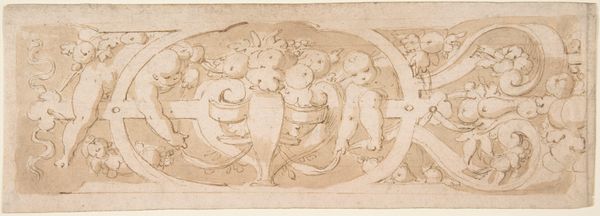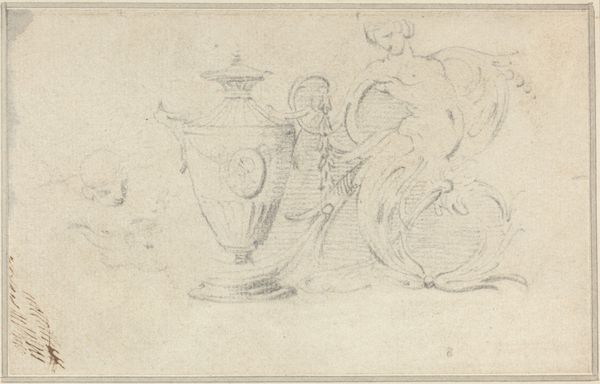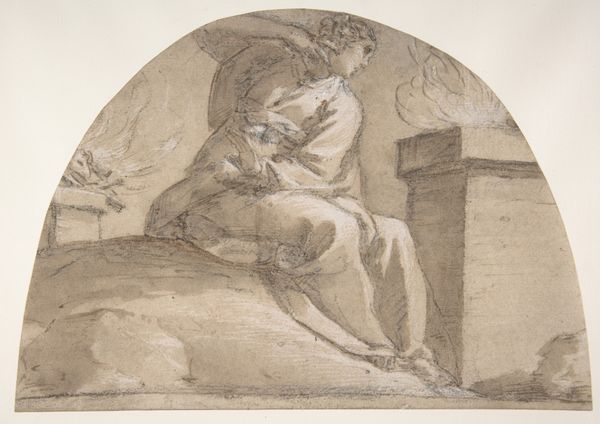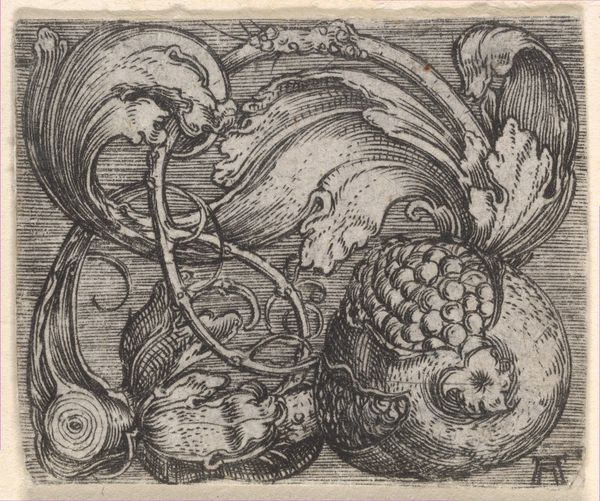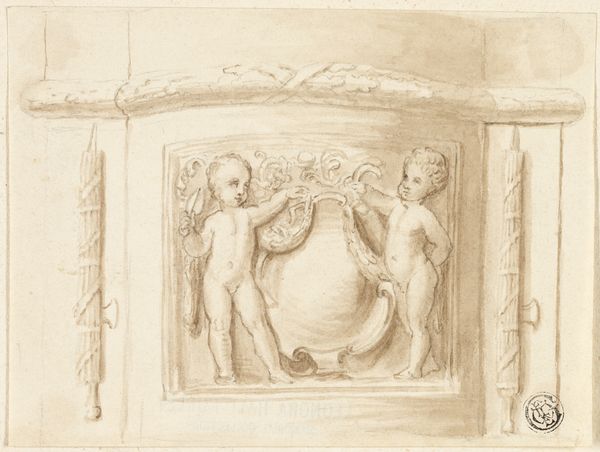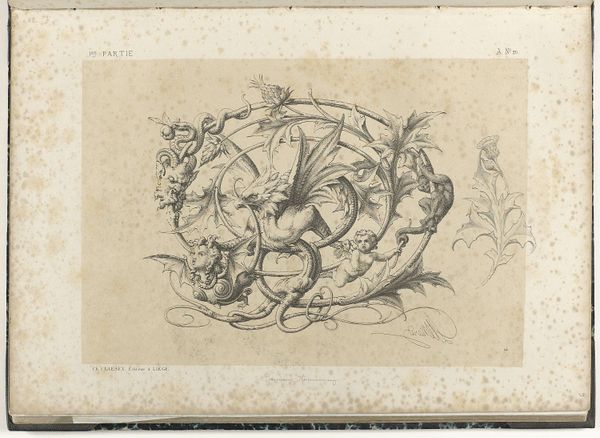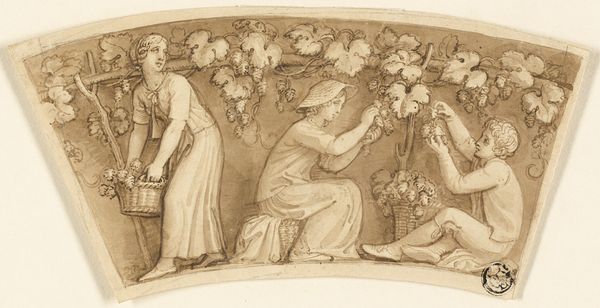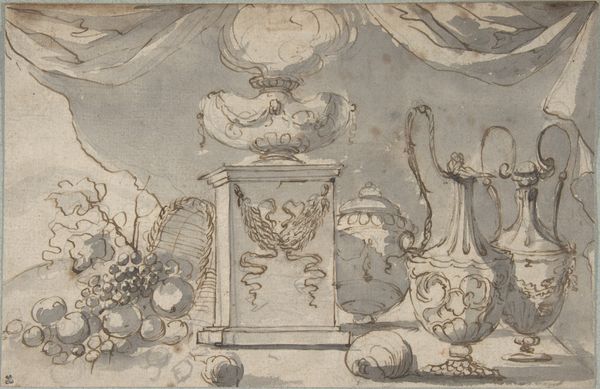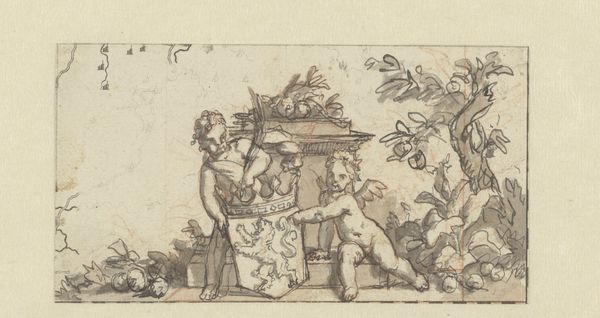
drawing, charcoal
#
drawing
#
allegory
#
baroque
#
charcoal drawing
#
figuration
#
charcoal art
#
charcoal
#
history-painting
#
charcoal
Dimensions: height 64 cm, width 180 cm, thickness 181.5 cm, depth 4.0 cm
Copyright: Rijks Museum: Open Domain
Curator: The tonal range in Jacob de Wit’s 1746 drawing, “Autumn,” is so delicate. I immediately perceive a sense of softness and ephemeral beauty. Editor: Yes, the subdued palette really draws me in too. It’s like looking at a memory, filtered through time and maybe a bit of melancholy. Curator: And those plump figures – what about them? In my view, it is not simply about decorative sweetness, as de Wit utilizes putti figures consistently to evoke both innocence and a latent vitality of existence. Editor: Absolutely, they act as carriers of meaning. Remember, Baroque art often employed allegory to convey moral or philosophical concepts, cloaked in beautiful and sensual forms. The putti embodying Autumn and holding grapes would definitely resonate with notions of plenty, harvest, and the waning year for the artwork's audiences. Curator: Right, consider that these visual vocabularies around seasons had deep roots. Each putto with its symbols activates the concept of abundance—linking directly to long-held cultural memories of agriculture, nature, and transformation. This imagery suggests not only physical richness but spiritual fulfilment too. Editor: You are hinting at a political undertone. And of course we also have to factor in the audience for such drawings in the 18th century. This drawing made in charcoal and chalk might not have hung in the halls of power. Such Baroque allegories appealed to a wealthy merchant class looking to elevate their status, didn’t they? These drawings served as signals that you were erudite enough to understand its meaning. Curator: That's right. By understanding the classical references, these patrons weren’t simply consuming aesthetics; they were actively participating in a social dialogue. The symbolism in the charcoal artwork affirms both tradition and new wealth simultaneously, creating bridges through pictorial narratives. Editor: A fascinating way to consider this deceptively simple drawing. De Wit wasn't just illustrating; he was commenting on, and shaping, his contemporary social values through art. The symbolic meaning gives insight to its own cultural context. Curator: The layered symbols act as an echo of shared human experience – celebrating renewal within cyclical change itself. It helps reveal lasting imprints passed down over generations that still matter in artistic depictions of time. Editor: It certainly urges us to see that imagery carries much more than what we think upon a quick look, particularly those embedded with cultural memories. Thank you for taking a moment with us today.
Comments
No comments
Be the first to comment and join the conversation on the ultimate creative platform.

